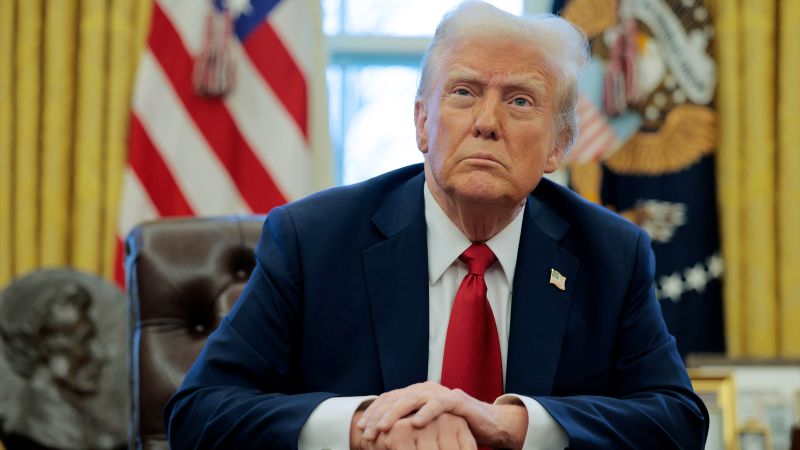On Thursday, President Donald Trump is set to sign a significant executive order which is anticipated to streamline investment opportunities for workplace retirement plans such as 401(k)s. This executive order is pivotal, as it could potentially enable employees to channel some of their hard-earned savings into alternative investment realms, notably private equity. Traditionally, private equity investments have been the preserve of institutional investors and affluent individuals, often referred to as “accredited” investors. The move towards inclusivity in investment options could represent a shift in how savings are allocated and managed within retirement plans.
The forthcoming order instructs both the Labor Department and the Securities and Exchange Commission (SEC) to provide guidance sufficient for employers. This guidance will focus on how to incorporate these alternative investment options into their retirement offerings. A senior official from the White House conveyed this information, indicating the administration’s intent to broaden investment horizons for the average employee. The landscape of retirement savings, characterized by over $12 trillion stashed in defined-contribution workplace plans, is undergoing a transformation with the private equity and credit sectors advocating for a foothold.
While laws do not prevent plan sponsors from offering private market investments to their employees, such options have often been avoided. This hesitance primarily stems from the fiduciary responsibilities that dictate sponsors to provide a prudent selection of reasonably priced investments to plan participants. Historically, private equity and private credit options have been viewed as more complex, with a higher risk profile, steeper fees, reduced transparency, and limited liquidity compared to publicly traded stock and bond funds.
According to Jaret Seiberg, a financial services policy analyst at TD Cowen Washington Research Group, this executive order will mainly clarify the government’s standpoint rather than enact immediate changes. He indicates that it still necessitates the crafting of new regulations which might not be realized until potentially 2026. Additionally, employers, acting as plan sponsors, are expected to conduct comprehensive due diligence regarding the new investment offerings once these regulations are articulated.
Lisa Gomez, who served in an advisory capacity at the Labor Department, underscores the necessity for plan sponsors to adhere to their fiduciary duties. She emphasizes that as new investment options emerge, it is imperative to rigorously evaluate them to ensure they align with the best interests of participants and their beneficiaries. According to Gomez, complexity may increase; thus, she advises sponsors to involve legal counsel and fiduciary advisors possessing expertise in private equity to navigate these new waters comprehensively.
Among her recommendations, Gomez suggests scrutinizing the newly introduced private investment options against existing products that had previously been reserved for institutional and wealthier investors. Questions arise regarding the impact on potential returns if those options are specifically designed to mitigate issues of cost, transparency, and liquidity for employees enrolled in plans governed by the Employee Retirement Income Security Act (ERISA). Importantly, she cautions against hastily dismissing private equity based solely on its perceived costs or complexities, suggesting that it may provide valuable benefits to the right investors under suitable circumstances.
The discussions spurred by this executive order hinge not only on the possible advantages of private equity investments but also on potential risks. There is a growing argument that incorporating at least some exposure to private markets could enhance overall portfolio diversification, given the significant growth of the private equity space compared to public markets. Hal Ratner of Morningstar Investment Management highlights a crucial statistic: there are substantially more firms in the private equity sector compared to publicly traded companies, indicating a diversification opportunity previously unavailable to average retail investors.
However, practical realities intrude; due to the substantial due diligence required of fiduciaries, it is unlikely that most workplace retirement savers will find themselves presented with private market options anytime soon. Columbus Day in 2022 could see ongoing discussions about the methods to facilitate average investors’ access to private equity and debt, ensuring that they benefit from the same safeguards mandated by ERISA.
Notably, skepticism surrounding these developments has been vocalized by prominent figures such as Senator Elizabeth Warren, who has raised concerns regarding the systemic risks posed by the growing private credit market to the broader economy. Citing a significant increase in the volume of bank loans to private debt funds, Warren has requested governmental analysis regarding the potential threats to financial stability. Her apprehensions spotlight the urgent need to assess and potentially regulate the intricate connections between private credit funds and traditional banking institutions.
Moving forward, it becomes evident that while there is potential for positive change, a careful and measured approach, balancing innovation against safeguarding financial stability, will be essential in realizing the full benefits of this significant policy shift.











